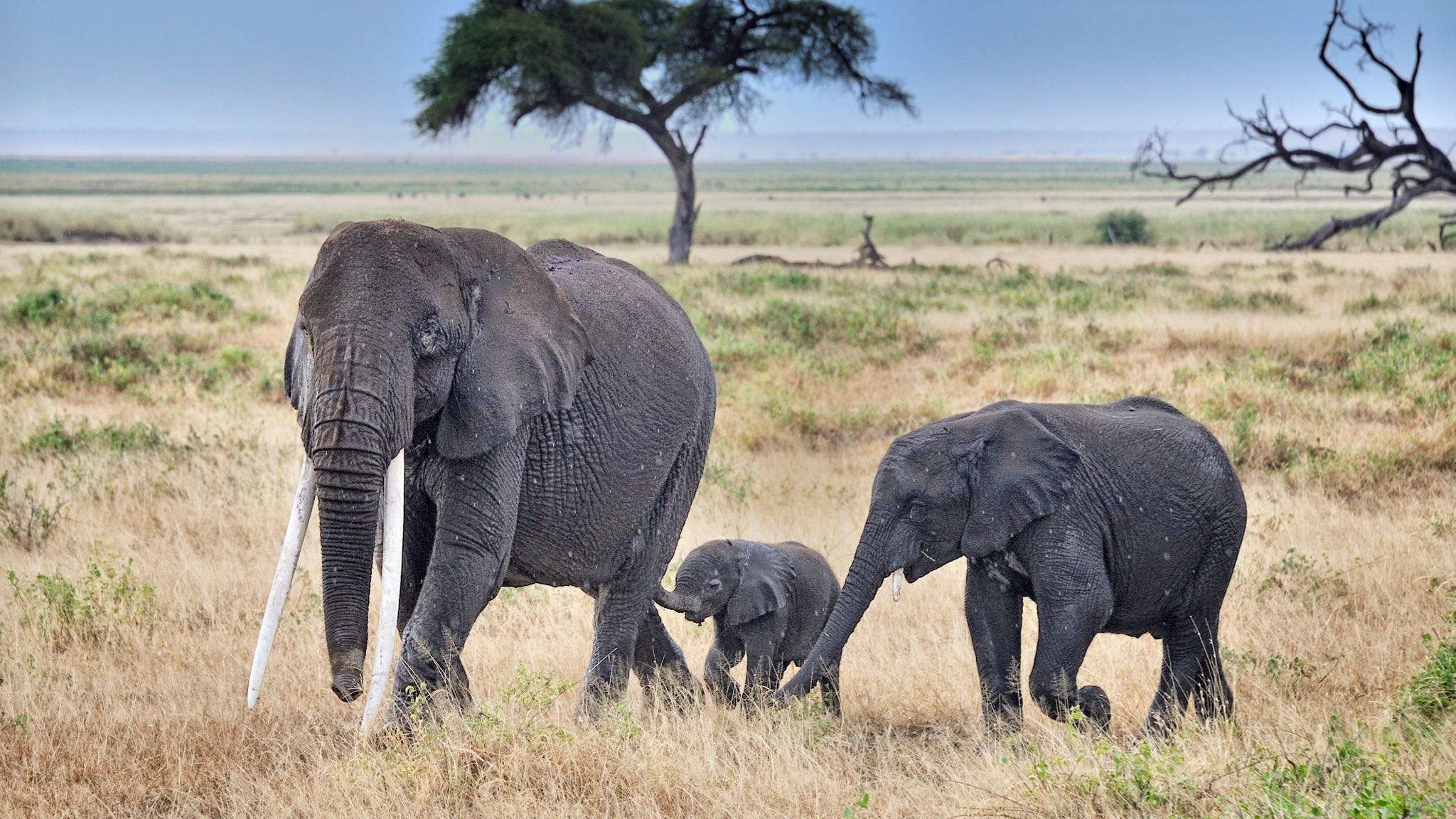The Depths of Animal Grief
Article originally appeared on PBS
Elephants die; we all do. In elephants and some others, it matters who has died. It’s why they are “who” animals. The crucial importance of memory, learning, and leadership in a family’s survival is why individuals matter. And so, death matters to the survivors.
A researcher once played a recording of an elephant who had died. The sound was coming from a speaker hidden in a thicket. The family went wild calling, looking all around. The dead elephant’s daughter called for days afterward. The researchers never again did such a thing.
Elephant Burials
Elephants’ response to death has been called, “probably the strangest thing about them.” They almost always react to a dead elephant’s remains. Occasionally they react to a human’s. The remains or bones of other species, they ignore.
Joyce Poole writes, “It is their silence that is most unsettling. The only sound is the slow blowing of air out of their trunks as they investigate their dead companion. It’s as if even the birds have stopped singing.” They cautiously extend their trunks, touching the body gently as if obtaining information. They run their trunk tips along the lower jaw and the tusks and the teeth—the parts that would have been most familiar in life and most touched during greetings—the most individually recognizable parts.
Cynthia Moss, director of the Amboseli Elephant Research Project in Kenya, told me of a wonderful matriarch named Big Tuskless. She died of natural causes, and a few weeks later Cynthia brought her jawbone to the research camp to determine her age at death. A few days after that, her family passed through the camp. There are several dozen elephant jaws on the ground in the camp, but the family detoured right to hers. They spent some time with it. They all touched it. And then all moved on, except one. After the others left, one stayed a long time, stroking Big Tuskless’s jaw with his trunk, fondling it, turning it. He was Butch, Big Tuskless’s seven-year-old son.
Nowadays humans immediately cart off every tusk. But in 1957, David Sheldrick wrote that elephants have, “a strange habit of removing tusks from their dead comrades.” He noted, “many instances” when elephants took tusks weighing up to 100 pounds up to half a mile. Iain Douglas-Hamilton once moved part of an elephant shot by a farmer to a different location. Soon a familiar family came along. When they caught the scent, they wheeled around and cautiously approached the body, drawing nearer with trunks waving up and down, ears half-forward. Each seemed reluctant to be first to reach the bones. They advanced in a tight huddle, then began their detailed sniffing and close examination of the tusks. Some bones, they rocked and gently rolled with their feet. Others, they clonked together. Some they tasted. Several individuals in turn rolled the skull. Soon all the elephants were investigating, many carrying bones away. George Adamson once shot a male elephant who had chased an official around his own garden. Local people butchered him for meat, then moved the carcass half a mile away. That night, elephants returned a shoulder blade and leg bone to exactly the spot where the elephant had fallen.
Elephants sometimes cover dead elephants with soil and vegetation, making them, as far as I’m aware, the only other animals who sometimes perform simple burials. Elephants have done the same when humans are involved on several recorded occasions. When sport hunters shot a large male elephant his companions surrounded his carcass. The hunters returned hours later to find that the others had not only covered their dead comrade with soil and leaves—they had covered his large head-wound with mud.
In Distress
Do they have a concept of death? Do they anticipate death? One day a few years ago in Kenya’s beautiful Samburu reserve, a matriarch named Eleanor, ailing, collapsed. Another matriarch, Grace, rapidly approached her with facial glands streaming from emotion. Grace lifted Eleanor back fully onto her feet. But Eleanor soon again collapsed. Grace appeared very stressed, and continued trying lifting Eleanor. No success. Grace stayed with Eleanor as night fell. During the night, Eleanor died. The next day an elephant named Maui started rocking Eleanor’s body with her foot. During the third day, Eleanor’s body was attended by her own family, another family, by Eleanor’s closest friend Maya, and again Grace was there. On the fifth day, Maya spent an hour and a half with Eleanor’s body. A week after her death, Eleanor’s family returned, and spent half an hour. Recalling this to me, Iain Douglas-Hamilton used the word “grief.”
—Read the rest of the article—




